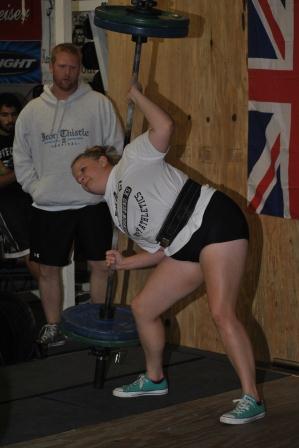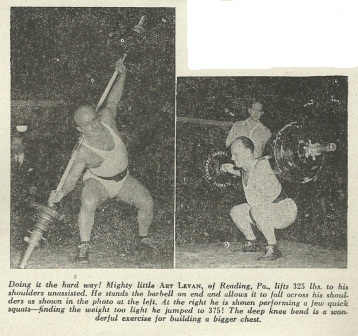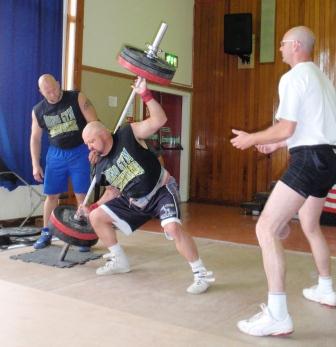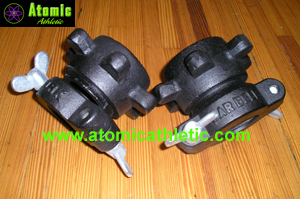Women vs. Men
by Al Myers

Jera Kressly performed a 90 KG Steinborn Lift at Worlds. Her lift exceeded that of several of the men - WITHOUT being percentage amended!
IAWA is the World organization that combines the organizations of the USAWA (United States All Round Weightlifting Association), IAWA-UK (International All Round Weightlifting Association of the United Kingdom), and the ARWLWA (All Round Weightlifting Western Australia). IAWA is the “umbrella organization” that allows these organizations to “come together” for international competitions, ie the World Championships, the Gold Cup, and the World Postal Meet. It is a great concept that has allowed for many great competitions and lots of fun times. However, there are differences in how each country interprets the rules. This is on top of there being rules differences between each organization . At each World Meet that I have been at I have found several of these differences.
One of the interesting things that came to my notice at this past World Championships is the combination of men and women, through adjusted points, which allowed men and women to be competing with each other for the “overall title”. I knew beforehand that IAWA scoring allowed for an additional 33% to be added to women’s scores. But I didn’t think this was to allow men and women to be directly competing against each other!! In recent years this has not been an issue, but this year with the outstanding efforts of Ruth Jackson it became noticeable. Ruth (when all adjustments were figured) placed THIRD OVERALL (with 736.0 points), behind Dan Wagman (845.7 points), and Chad Ullom (768.4 points).
The USAWA does this quite differently. Men and women are in different divisions and do not compete directly against each other for titles. At least that is the way it has been done over the past 10 years. I can not attest if that is how it was in the very beginning of the USAWA. This puzzled me why there is this difference in the way this has been done. I know the IAWA(UK) allows for this to happen, and men and women compete with each other for the “overall” in their competitions.
I feel the reason for this difference is the rule interpretation from the Rule Book. Both the USAWA and the IAWA(UK) rulebooks has only this line, which is the same, in them:
1. Competitions are to be organized for both men and women.
There is no other rule stipulation in either rulebook pertaining to this issue. So it obviously becomes a matter of interpretation?? When it says “for both” – I take that as implying a separation of men and women into two different divisions. Otherwise it should say, “which includes”, or something like “together as one group”. Am I wrong in thinking this way? By the way, this is an original rule in both rulebooks that has not been changed or amended through the years. Apparently the USAWA “took it one way”, while the IAWA(UK) “took it the other way”.
Please express your viewpoints on this issue on the USAWA Discussion Forum. I think this is a topic worthy of discussion. Also – you may have noticed that I was careful not to give my opinion on whether I think it is right or wrong for men to be competing against women through a formula. That’s another issue altogether!! I’ll save that for the discussion forum!!!


